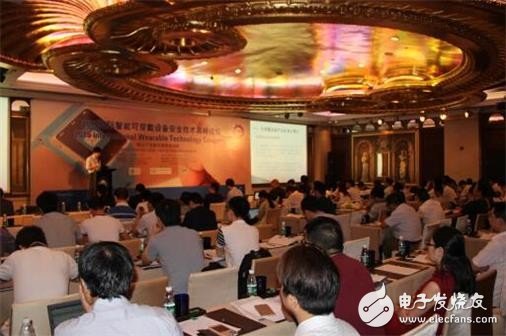In the next five years, the global wearable market will grow substantially. It is estimated that by 2019, the annual shipment of wearable devices worldwide will reach an astonishing 148 million units, an increase of 35% compared with the 33 million units in 2014.
It is worth noting that, unlike other consumer electronics products, the battery life of wearable devices is not dependent on the increase in battery size, but is dependent on the optimization of functionality and operating time, given the size and shape limitations of the product. .
On the other hand, the use scenes of wearable products mostly occur on the surface of the human body. According to the distance from the human body, wearable devices can be divided into three categories: internal human body, human body surface and near human body, which brings to wearable device manufacturers. new challenge. To ensure user safety, manufacturers need to detect and eliminate certain chemicals that are harmful to the human body, especially those that come into contact with the skin. In addition, biocompatibility, electromagnetic exposure, and electrical safety, energy efficiency, data security, and user privacy are also important issues to consider.
Therefore, how to avoid the risks brought by wearable devices and the security risks to consumers has become a difficult problem to be solved.
Recently hosted by TUV SÃœD Group (hereinafter referred to as TUV SUD), China International Inspection & Wear Co., Ltd. and International Wearable Technology Group held the 2015 International Intelligent Wearable Device Safety Technology Summit Forum held in Shenzhen. Mr. Wang Xin, Chairman of China Inspection Co., Ltd. (Hong Kong), Mr. ChrisTIan Stammel, CEO of International Wearable Technology Group, and Mr. Dirk von Wahl, CEO and CEO of TUV SUD Greater China, attended the meeting. There are guests from the National Standards Committee to give a wonderful speech. At the scene, there were hundreds of industry and business representatives who were concerned about the development of the wearable device industry to discuss the risks brought by wearable devices and the development of safety hazards and related safety standards for consumers.

2015 International Intelligent Wearable Device Security Technology Summit Forum

(left to right) Mr. Wang Xin, Chairman of China Inspection Co., Ltd. (Hong Kong), Mr. Dirk von Wahl, Executive President and CEO of TUV SUD Greater China Group, and Mr. ChrisTIan Stammel, CEO of International Wearable Technology Group
Wearable device security risks

TUV speaking expert
The five experts of TUV SUD considered the safety of wearable devices for the human body, how to evaluate health wearable devices, the impact of electromagnetic radiation on wearable devices, the chemical safety of wearable devices, and the mobile applications in wearable devices. In-depth analysis and sharing of issues, and strive to help the field industry and business representatives to solve the hidden security risks of wearable devices, and provide expert advice for the future development of security standards for this product category.
Technical standards for the wearable device industry
Despite the hot development of the wearable device industry, more and more companies are investing in R&D and production of wearable products. However, there is no unified technical standard in China, so the quality of products in the industry is uneven, and consumers are worried about data security. The problem is not solved.
The forum invited Mr. Wang Tianzhi of the National Standards Committee to elaborate on the current status of domestic wearable equipment related standards and the reform plan of national standardization work, and Mr. ChrisTIan Stammel, CEO of International Wearable Technology Group, analyzed the development trend of the international wearable industry. Defining the importance of uniform technical standards for safe and reliable wearable device products.
Mr. Dirk von Wahl, President and CEO of TUV SUD Greater China Group, said: “Made in China is a major force in wearable device manufacturers. Thanks to this, we can learn about the industry from local wearable device manufacturers and companies. The latest information. TUV SUD and China Inspection Co., Ltd. and International Wearable Technology Group jointly discussed the domestic and international safety technical requirements for wearable devices, preparing for the future participation in the development of wearable equipment industry standards, and promoting wearable together. Healthy and orderly development of the equipment industry."
LED PCB
As printed circuit board technology has continued to evolve, it has paved the way for the creation of a host of exciting product innovations. A prime example is the development of the PCB for LED lighting. The LED is soldered to the circuit board and features a chip that produces the light when electrically connected. A thermal heat sink and a ceramic base are used to bond the chip.
An LED PCB board tends to generate a high volume of heat, making it difficult to cool via traditional means. Consequently, metal core PCBs are frequently chosen for LED application due to their enhanced ability to dissipate heat. Aluminum in particular is often used to manufacture circuit boards for LED lights. The Aluminum PCB typically includes a thin layer of thermally conductive dielectric material that can transfer and dissipate the heat with much greater efficiency than a traditional Rigid PCB.
PCB LED Applications
PCB LED lights can be incorporated into numerous lighting applications due to their combination of excellent energy efficiency, low cost and maximum design flexibility. Examples include Automotive headlights, Airport runway landing lights, Lighting used in military field applications, Street lighting, Highway tunnel lighting, Photovoltaic (solar) lighting, Flashlights and lanterns, Traffic and signal lighting, Lighting in hospital operating rooms, High growth plant lighting and many others.
LED PCB
LED PCB,LED Circuit Board PCB,Aluminum LED PCB,LED Display PCB
Storm Circuit Technology Ltd , https://www.stormpcb.com